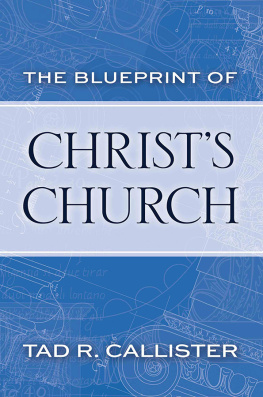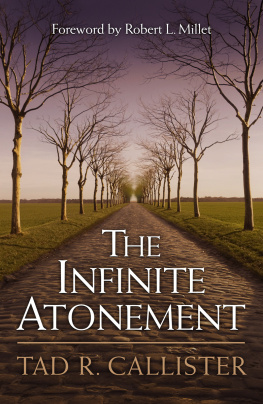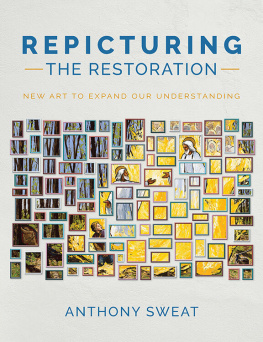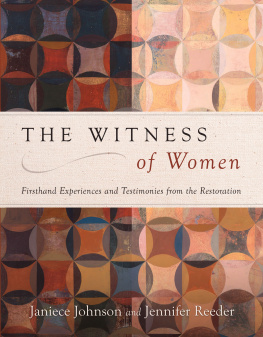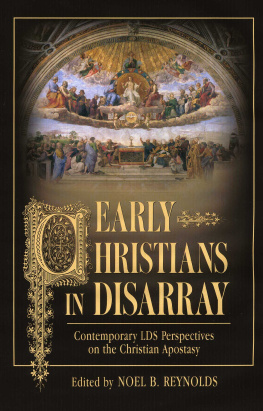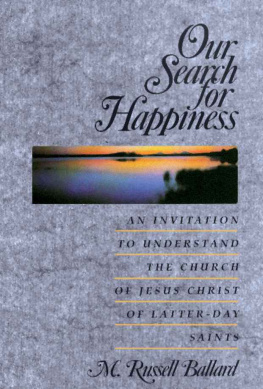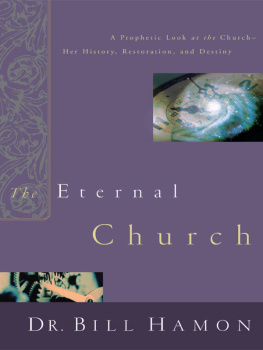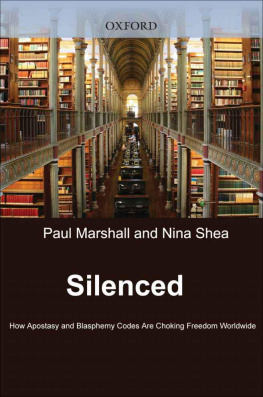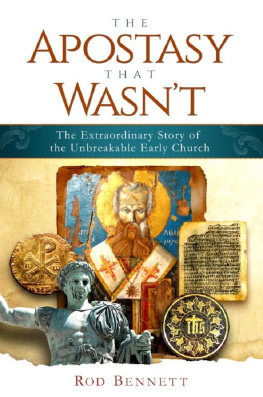The Inevitable Apostasy
Tad R. Callister
2006 Tad R. Callister.
All rights reserved. No part of this book may be reproduced in any form or by any means without permission in writing from the publisher, Deseret Book Company (permissions@deseretbook.com), P.O. Box 30178, Salt Lake City Utah 84130. This work is not an official publication of The Church of Jesus Christ of Latter-day Saints. The views expressed herein are the responsibility of the author and do not necessarily represent the position of the Church or of Deseret Book. Deseret Book is a registered trademark of Deseret Book Company.
Acknowledgments
Thanks to my family members, who rendered tremendous support, particularly my wife, Kathryn, who reviewed numerous manuscripts, did research, entertained many discussions with me, and made many helpful suggestions. These family members also include our children (and their spouses), Angela and Kenneth Dalebout, Richard T. and Heather Callister, Nathan and Bethany Callister, Rebecca and Robert Thompson, Jared and Yanni Callister, Jeremy Callister; my nephew Paul Callister; and my cousin Richard C. Callister.
I give particular thanks to my secretary of twenty-six years, Julia Dalton McLaren. Without her help I could not have written this book. For more than five years she repeatedly retyped the manuscripts, read many books, did extensive research, verified each of the citations, and edited the material. Her contribution was invaluable and much appreciated.
Thanks to my brother Elder Douglas L. Callister and his wife, Jan, both of whom reviewed the manuscript on multiple occasions and gave me valuable input on doctrinal issues and editorial changes.
To each of the following, who carefully read the manuscript and made substantial contributions: Joseph Bentley, Kirk O. Broberg, Kenneth R. French, Carol Hounsell, Randall R. Huff, L. Tyler Jamison, Michael K. Parson, Elder Lynn G. Robbins, Howard and Joyce Swainston, Mark H. Willis, Larry and Linda Wilson.
To Shelley Dalton for her meticulous review of each scripture and for her help in reviewing the many citations.
To Carol P. Baker, Sam R. Baker, Dolina Smith, and J. Bruce Smith for carefully proofreading the final manuscript.
To Lou Anne Mallory for her assistance in locating citations difficult to find.
To Cory H. Maxwell for his many helpful suggestions in facilitating the publication of this book.
To Jay A. Parry for his meticulous editing skills and insightful comments.
Finally, to others at Deseret Book who made significant contributions: Richard Erickson, art director; Laurie Cook, typographer; and Lisa Mangum, editorial assistant.
Introduction
Not all questions are of equal import. Some are amusing; some lead to the discovery of trivial insights; others open doors to significant discoveries in fields such as science, history, and music; and yet others are of such a deep and soul-searching nature that, if explored, they not only inform us, but they change us. One such question has been asked with recurring frequency in modern Christianity: "What happened to Christ's Church?" The purpose of this book is to assist those who earnestly seek an answer to that inquiry.
Since God loves all his children in all ages, his gospel was introduced to the earth in the beginning of time.
Both the great apostasy and latter-day restoration were inevitable, not in the sense that man's agency was restrained, but in the sense that they were events foreseen in the premortal councils of heaven, and prophesied of by God's "holy prophets since the world began" ().
In presenting this material I have relied first and foremost upon the testimony of the scriptures and prophets, and, second, upon the writings of early Christian writers. Many of these early Christian writers are known as the Ante-Nicene Fathers, because they lived after the ascension of Christ but before the Nicene Council was held in A.D. 325. A significant portion of their writings is contained in a ten-volume set known as The Ante-Nicene Fathers; it is frequently referred to throughout this book. While some might be unfamiliar with such names as Irenaeus, Clement of Alexandria, Hippolytus, Tertullian, and Origen, these are some of the prominent men who were writers and/or leaders of the church in the wake of the apostles' death. A list of many of these writers and related background information is found in Appendix A. The first time each of these is mentioned in a given chapter, the writer's birth and death dates are cited, as far as these are known.
In most cases the early Christian writers appear to have been good and bright men, but they were not prophets. As a result, even though they present an invaluable historical perspective of the early church and offer many insights into its theology, their writings are not the equivalent of scripture.
Years ago my father, an attorney, tried a lawsuit in which he presented only one case to defend his positionan old case issued by the Supreme Court. The opposing attorney presented a number of more recent cases from the appellate and trial courts. Finally the judge asked my father, "Mr. Callister, don't you have a more current case than this to support your position?" My father replied, "Your Honor, may I remind you that when the Supreme Court speaks on a subject, it only needs to speak once." The judge nodded with approval.
The words of the prophets are the "Supreme Court" on spiritual matters. Any other opinions of menwhether they be that of the early Christian writers, theologians, ministers, psychologists, or otherwiseare of little or no worth if they contradict the scriptures in any way. Thus, the writings of the early Christians help us better understand the scriptures, but they do not overrule them.
Experience has taught us that some Christian historians and theologians will lock on to a particular scripture or a quote of an ancient Christian writer that supports their point of view, while others will lock on to an opposing scripture or quote to sustain their viewpoint. In order to present the truth, and not just a viewpoint, I have earnestly sought to present a pattern of scriptures supported by a pattern of writings from the early Christian writers, so that no single scripture and no single statement of an early Christian writer is controlling. This seems consistent with the Lord's test for truth, that "in the mouth of two or three witnesses shall every word be established" ().
I recognize that this book will likely be read principally by members of The Church of Jesus Christ of Latter-day Saints ("LDS"). I have many good friends, however, who are not of the LDS faith, and for whom I have the greatest respect. They love the Savior and strive to keep his commandments. While we have doctrinal differences, as discussed in this book, many of our mission goals are similar. Their churches are also active in providing for the homeless, caring for the elderly, encouraging morality, and sponsoring humanitarian aid on a worldwide basis. Accordingly, I hope I have said nothing in this book that would offend my non-LDS friends or others of similar beliefs. While I have attempted to speak candidly and truthfully on doctrinal and historical matters, it has not been my intent to disparage in any way their exemplary lives or Christlike service.
On one occasion a friend asked me if Mormons believed they were better than other people. I responded that I thought there were many people of other faiths better than I was, including him, but I did believe he would be an even better man if he had the truths I had, and I should be less of a man if they were absent from my life. Hopefully, this book can add to the light and truth which my non-LDS friends already possess in part.


